How to Grow and Care for Pinto Beans
Even new gardeners can grow these popular beans
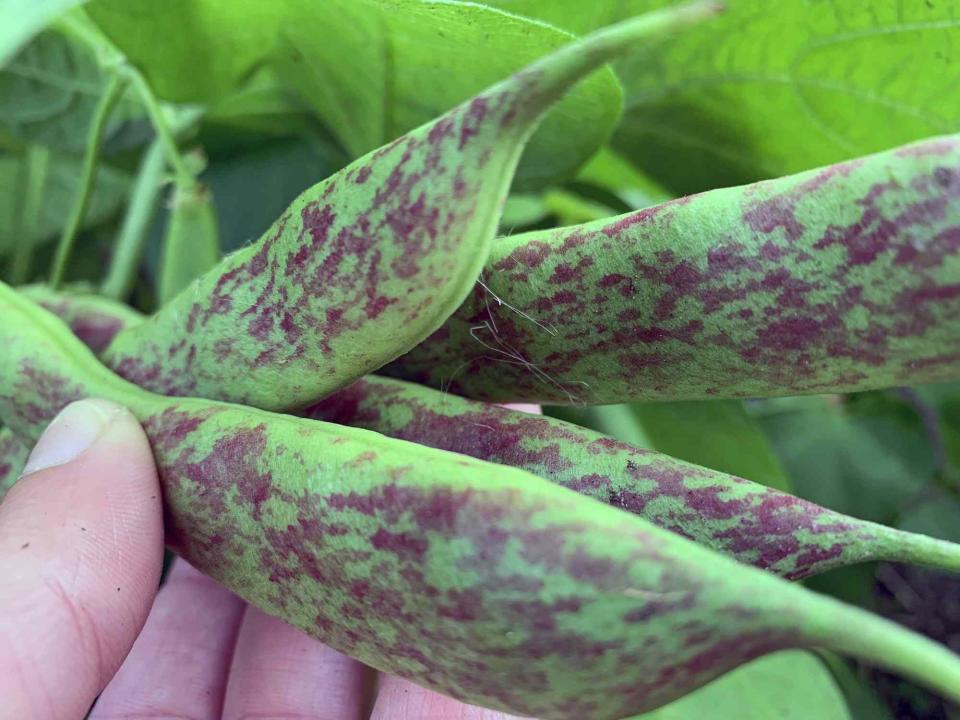
Wildroze / Getty Images
Reviewed by Barbara Gillette
Pinto beans are one of the most popular beans and one of the easiest to grow. The beige or tan speckled beans from Mexico—pinto means “painted” in Spanish—are widely used in Mexican and southwestern dishes. They have an earthy taste and creamy texture, and though they are usually grown and dried, you can also eat them fresh.
Like all beans, pinto beans are an annual vegetable that can be grown in a wide range of hardiness zones. There are many different pinto varieties, both vines that need trellising and bush-type pinto beans that don’t require support. Pick the type that best fits your space.
Common name | Pinto bean |
Botanical Name | Phaseolus vulgaris |
Family | Fabaceae |
Plant Type | Annual, vegetable, vine |
Size | 2 ft. tall or 6 ft. long vines, 1 ft. spread |
Sun Exposure | Full |
Soil Type | Well-drained |
Soil pH | Acidic, neutral |
Hardiness Zones | 2-11 USDA) |
Native Area | Central America |
How to Plant Pinto Beans
When to Plant
Like most beans, pinto beans need warm soil. Wait until there is no more danger of a spring frost and soil temperature reaches 60 degrees F. If your summers are short, you can get a head start on the growing season by starting pinto beans indoors in large containers then moving the containers outdoors when temperatures reach adequate levels. Pinto beans cannot be started as seedlings and transplanted into the ground. They don't tolerate having their roots disturbed.
For a steady supply of pinto beans, plant every two weeks. To determine the last possible planting date, add up the days to maturity of your variety plus about a generous two-week time window for germination. Subtract that total number from your average first fall frost date.
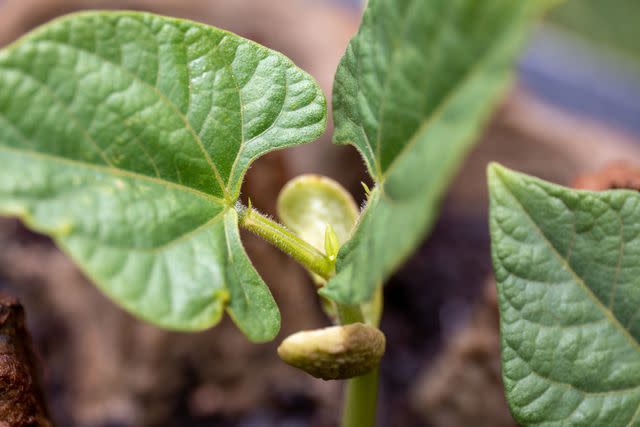
ianmcdonnell / Getty Images
Selecting a Planting Site
Plenty of sun is key for choosing a planting site. If you have strong winds, plant the beans in a protected spot. Growing them in the same location every year won't negatively impact soil however rotating your crop can help reduce pests an diseases. Grow pinto beans next to suitable neighbors. Good companion plants are corn, squash, cucumbers, strawberries, and members of the nightshade family such as tomatoes and eggplant. Do not plant them next to onions or garlic.
Spacing, Depth, and Support
Plant the beans with the eye facing downward 1.5 inches deep and 4 to 6 inches apart. Space rows at least 2 feet apart for easy access. When the seedlings are a few inches tall, thin them to 6 inches apart.
Bush-type pinto beans and varieties with a low growth habit don’t require trellising but some support, such as a single stake, keeps them off the ground and ensures good air circulation. Upright vining types of pinto beans need a sturdy trellis or fence. Install it before planting so you don’t disturb the tender bean roots later.
Pinto Bean Care
If planted in the right conditions, pinto beans are easy to grow and fairly low maintenance.
Light
Pinto beans need full sun, at least six to eight hours every day.
Soil
While pinto beans prefer silty loam, they can also grow in other soil as long as it has good drainage and contains a good amount of organic matter. The pH can be slightly acidic to neutral. Alkaline soil is not recommended.
Water
Keep the soil moist after planting until the seeds germinate and the roots of the young plants are established. After that, the plants need about 1 inch of water per week. You can let the soil dry out slightly but keep in mind that beans have shallow roots. If the top 1 to 2 inches of soil feel dry, you need to water. This is especially important when the plants are flowering, as lack of water during that stage leads to poor fruit.
Water slowly and deeply around the base of the plants until the top several inches of soil are moist. Avoid overhead watering, which can foster the spread of diseases.
Temperature and Humidity
Pinto beans do not germinate in cold soil. One way to speed up soil warming in the spring is to lay down black agricultural plastic in which you cut about 4-inch holes to plant the seeds.
Pinto beans are a warm-weather crop, but they have tolerance limits for heat. In extremely hot weather and temperatures over 93 degrees F, they won’t flower and set bean pods. Usually, they rebound after a heat wave but if you live in a hot climate, you should protect the plants with a shade cloth, ideally one that provides 20 to 40 percent shade.
In high humidity, the foliage is prone to get fungal diseases such as powdery mildew.
Fertilizer
Because beans come with their own nitrogen, there is no need to fertilize them. If the soil is poor and needs a nutrient boost, select a fertilizer that is low in nitrogen (5-10-10 or 3-5-5). But it’s better to start the seeds in soil that has been amended with plenty of organic matter like aged compost before planting.
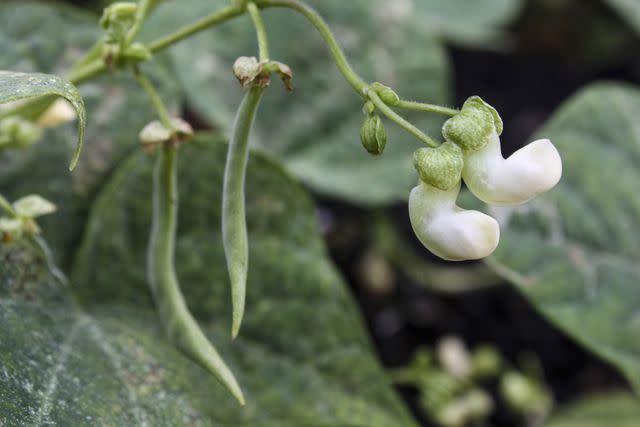
CandiceDawn / Getty Images
Pollination
Pinto beans are self-fertile and the flowers self-pollinating. Bees are attracted to bean flowers and can assist pollination.
Types of Pinto Beans
Most pinto beans available to home gardeners from seed companies are simply called pinto beans without any indication of variety. Pinto beans that have been bred with special features for agricultural use are often not available in small quantities. These varieties include:
‘Othello’: a bush-type variety that is popular because of its high yield. 90 to 95 days to maturity.
‘Hopi Black’: a mid-season vining pole-bean variety. The beans have been grown by Hopi farmers in Arizona for centuries. Contrary to their name, these beans are not black but black-and-cream-colored. 90 days to maturity.
‘Santa Fe’: another mid-season pinto bean with an upright growth habit and large seeds. It is one of the newer pinto bean varieties. 88 to 92 days to maturity.
Harvesting
The days to maturity only gives you an approximate time frame for when your beans are ready to be harvested. There are numerous variables such as weather that affect growth rate. You can harvest pinto beans at the fresh green or dry stage. Fresh pinto beans can be harvested when the pods are 4 to 6 inches long and plump. For the best taste, shell and use them or shell, blanch and freeze them within a couple of days.
Dry pinto beans are harvested when the pods are yellow to tan in color and dry but not so brittle they are cracking open and scattering their seeds. Either remove the pods from the plant or pull the entire plant and remove the pods later.
Ideally, you should harvest on a day when the plant is completely dry but if that is not possible and it is wet from rain, pull the plant and hang it upside down in a dry place to let the pods dry out completely.
Remove the beans from their pods, then pick through them to remove any broken and molded beans. To pasteurize them, place them in the freezer set at 0 degrees F for at least 48 hours, or in the oven in a single layer on a baking sheet at 160 degrees F for 30 minutes. Afterwards, store the beans in an airtight container in a cool, dark place.
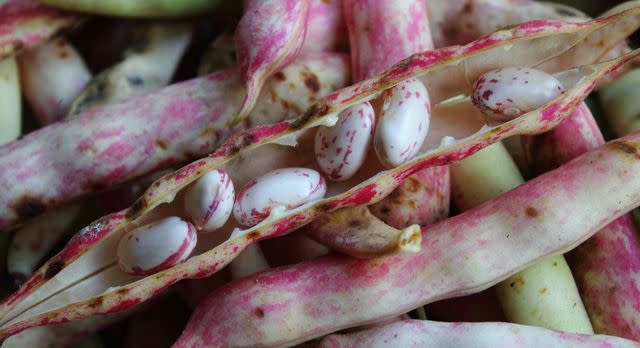
KAdams66 / Getty Images
How to Grow Pinto Beans in Pots
Pinto beans do best in garden soil, but if your summers are short or you don’t have a backyard, you can grow them in containers that are at least 8 inches in diameter. Fill them with a well-draining potting mix and a few handfuls of organic matter. Compact, bush-type varieties that do not require trellising work best.
Tip
Keep in mind that container plants need more frequent watering and low-nitrogen fertilizer than in-ground plants.
Propagating Pinto Beans
Pinto beans are propagated from seed so saving beans from your plants is a great way to procure seeds for next year.
Leave the beans that are intended for seed-saving on the plant until they have completely dried. Remove them from the pods and discard any blemished and diseased beans. Let them air-dry for a few days in a cool, dark location until they are fully hardened. Store them in a jar with a tight-fitting lid or sealed container and keep in a cool, dark place until the spring.
How to Grow Pinto Beans From Seed
To grow pinto beans from seed, follow the instructions in the "How to Plant" section of this article. Seeds germinate in 8 to 14 days.
When starting from seed you can treat the beans with inoculant prior to planting. Sold for beans and peas, this is a commercial garden product that provides live bacteria for legumes and helps roots form the nodules that add nitrogen to the soil.
Inoculant products usually call for soaking the beans and then rolling them in inoculant before planting. Always follow the label instructions.
Common Pests & Plant Diseases
Pinto beans can be affected by several pests, including aphids, leafhoppers, and spider mites. Damage from these sap-sucking insects appears as curled and yellowing leaves or speckled leaves and stems.
Another pest found on pinto beans is the Mexican bean beetle whch riddle the leaves with holes until they look like lace. Infestations can be treated with Neem oil and diatomaceous earth but keep in mind that these insecticides can also harm beneficial insects. You can protect the plants with row covers right up to the harvest.
Common diseases of pinto beans include bacterial blight, mosaic virus, white mold, and fusarium root rot. Ensuring good airflow between plants and proper watering techniques can help prevent infections from spreading.
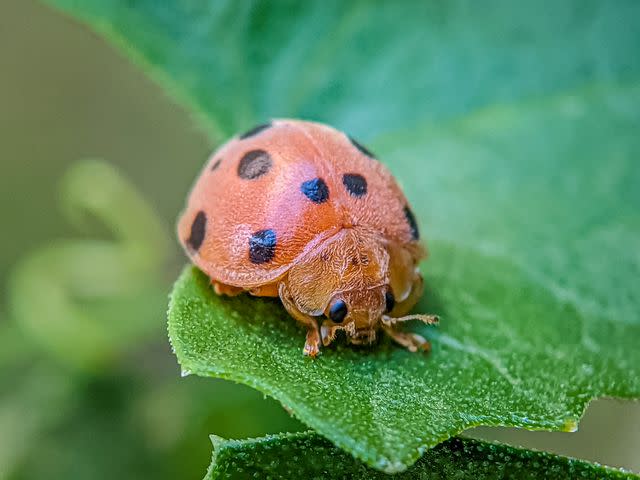
Die Locked / Getty Images
Mexican bean beetleFrequently Asked Questions
Can you grow pinto beans from beans bought at the grocery store?
You can although it's preferable to purchase fresh bean seed. Grocery store bagged beans are sometimes heat-treated (roasted) or too old and have been sitting on the shelf for a long period, so they are no longer viable. Do not buy if the package does not have a packaging or expiration date.
How fast do pinto beans grow?
It takes pinto beans three to five months in warm, frost-free weather from planting to harvest.
Why aren’t my pinto beans germinating?
Pinto beans have a low germination rate of only 35 percent. Therefore, it is recommended to plant the seeds densely and thin them out as needed.
Read Next: How to Grow Fava Beans (Broad Beans)
Read the original article on The Spruce.

